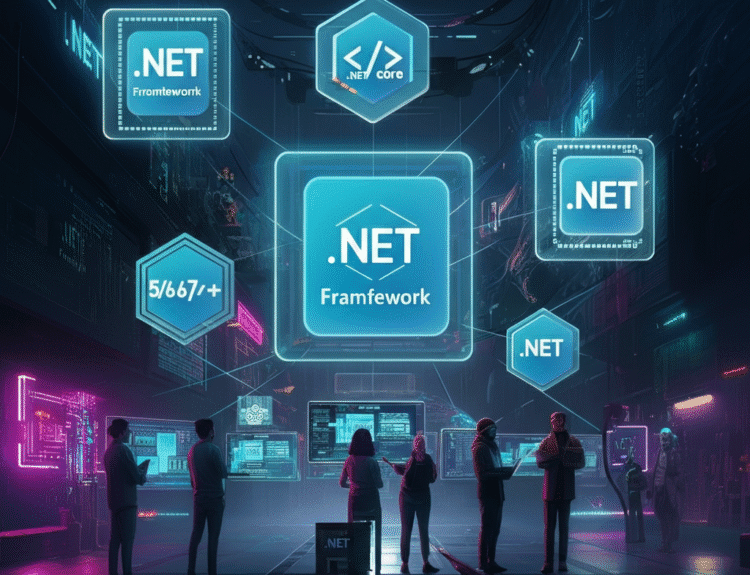Building web applications and services has never been easier or more efficient, thanks to the expanding .NET ecosystem. For developers, creating robust and scalable RESTful APIs using ASP.NET Core Web API unlocks endless possibilities for integrating modern applications, enabling seamless communication between services, and even powering mobile and IoT devices.
This guide dives deep into RESTful APIs with ASP.NET Core Web API, catered specifically for .NET developers, software architects, and tech enthusiasts. By the end of this blog, you’ll have explored not only how the .NET ecosystem has shaped web development but also practical strategies and tools to integrate RESTful services efficiently.
Understanding the .NET Ecosystem
The .NET ecosystem serves as the backbone for developers building enterprise-grade applications. Over the years, it has evolved and adapted to meet the changing technological landscape, offering an unparalleled platform for modern web application development.
.NET Framework: The Foundation
The .NET Framework laid the groundwork for modern .NET development. It introduced essential features like the Common Language Runtime (CLR), which provides memory management, exception handling, and runtime optimizations, as well as features like LINQ (Language Integrated Query), making database integration simpler.
However, the .NET Framework is limited to Windows. While it’s reliable and robust, those constraints often mean it’s not the best choice for cross-platform, cloud-native, or containerized applications.
.NET Core: A Game Changer
Enter .NET Core, Microsoft’s open-source, cross-platform framework designed to address the limitations of .NET Framework. Its highlights include:
- Cross-Platform Support: Applications run seamlessly on Linux, Windows, and macOS.
- Improved Performance: Faster runtime and optimized memory allocation make it ideal for high-performance applications.
- Modern Development Trends: Built to support microservices, cloud-native architectures, and containerization using tools like Kubernetes and Docker.
.NET Core became the go-to solution for enterprises looking for both flexibility and scalability.
Modern .NET (5/6/7+): Unified and Future-Ready
.NET 5/6/7+ represents the unification of .NET Framework and .NET Core, offering:
- A single SDK for all .NET workloads, reducing fragmentation.
- Enhancements like improved Blazor server- and web-based apps, C# 10 features, and Entity Framework Core updates.
- A forward-looking roadmap, encouraging businesses to migrate from legacy systems seamlessly.
The evolution of ASP.NET Core aligns perfectly with these advancements, making it an indispensable tool for developers building RESTful APIs.
RESTful APIs in ASP.NET Core Web API
ASP.NET Core has become a preferred framework for building RESTful web APIs. It allows developers to define routes, integrate middleware, and access powerful libraries—all optimized for HTTP communication.
Why RESTful APIs?
Representational State Transfer (REST) APIs are preferred by developers thanks to their simplicity and scalability. These APIs:
- Use standard HTTP methods (GET, POST, PUT, DELETE).
- Allow stateless communication, ensuring fast and seamless data sharing.
- Are language-agnostic, integrating well with mobile and backend systems.
Highlights of ASP.NET Core for API Development
- Fast Performance
ASP.NET Core outpaces other frameworks, with benchmark tests showing millions of requests handled per second.
- Built-In Features
- Dependency Injection in .NET enables easy service management.
- Built-in logging and error handling simplify troubleshooting.
- Authentication and Authorization in .NET
Secure APIs with ease, leveraging features like JWT tokens, OAuth, and third-party authentication providers like Google and Facebook.
- SignalR for Real-Time Communication
For real-time apps like chat platforms and live notifications, SignalR is invaluable.
- Cloud-Readiness
Integrate effortlessly with Azure cloud services for hosting, database solutions, and additional computational power.
Practical Guide to Building a RESTful API
To create a RESTful API with ASP.NET Core Web API:
- Set Up the ASP.NET Core Web API Project
Use the project template provided in Visual Studio or CLI to scaffold a new API project.
- Define Models and Entity Framework Core
Integrate database operations using Entity Framework Core for seamless data manipulation.
- Setup Routes and Controllers
Define endpoints in controllers, routing HTTP requests to their respective action methods using attributes like [HttpGet], [HttpPost], etc.
- Configure Middleware
Leverage built-in middleware for authentication, error handling, and logging.
- Secure Your APIs
Apply authentication and authorization and follow secure coding practices in .NET to protect sensitive data.
- Optimize and Test
Use unit testing in .NET, tools like Postman, and performance optimization techniques to ensure robust APIs.
Example Code Snippet
Here is a simple example of a GET endpoint in ASP.NET Core Web API:
“`
[ApiController]
[Route(“api/[controller]”)]
public class ProductsController : ControllerBase
{
private readonly ApplicationDbContext _context;
public ProductsController(ApplicationDbContext context)
{
_context = context;
}
[HttpGet]
public async Task<IActionResult> GetProducts()
{
var products = await _context.Products.ToListAsync();
return Ok(products);
}
}
“`
Replace the ApplicationDbContext class with your database context and ensure proper async/await in C# implementation for database calls.
Real-World Scenarios for RESTful APIs
1. E-commerce Platforms
E-commerce platforms use APIs to handle inventory, orders, and shipping logistics between mobile apps, front-end systems, and backend systems.
2. Microservices in .NET
Build scalable systems where individual tasks (like payment processing or notifications) function independently using APIs for communication.
3. IoT Devices
REST APIs power connected IoT ecosystems, facilitating device-to-device communication over the cloud.
4. Third-Party Integrations
Enterprises use APIs to link with payment gateways, CRM tools, or cross-functional B2B APIs.
5. Cloud Deployment with Kubernetes
Host your APIs on Azure with support for containerized environments, benefiting from workload orchestration through Kubernetes.
Moving Forward with RESTful APIs in .NET
Whether you’re a seasoned developer or new to C# programming, building RESTful APIs with ASP.NET Core Web API can elevate your applications—and career.
Recommended Next Steps
- Brush Up on Essentials with Microsoft’s ASP.NET Tutorials.
- Experiment with API Integrations in real-world microservices environments.
- Join Developer Communities, such as Stack Overflow or Microsoft Q&A, to share insights and troubleshoot challenges.
Are you ready to take your RESTful API skills to the next level? Sign up for a free .NET hosting trial on Azure to deploy your first API project today.




